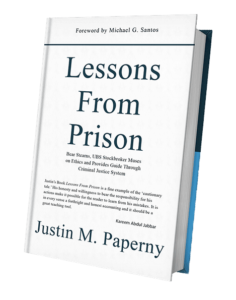Introduction
A California jury found former Silicon Valley superstar Elizabeth Holmes guilty of investor fraud.
Specifically, the jury found Holmes guilty of conspiracy to defraud Theranos investors from 2010 to 2015 and three counts of wire fraud against three Theranos investors. In Holmes’ case, the loss amount now stands close to $150 million.
In a mixed verdict, the jury acquitted Holmes of conspiracy and fraud charges involving Theranos patients.
Also, the jury could not reach a unanimous verdict on three additional wire fraud charges against early Theranos investors, and U.S. District Judge Edward Davila declared a mistrial on those counts. Although prosecutors could choose to retry those charges, that will probably not happen since Holmes is already facing substantial prison time.
Holmes now faces up to 20 years in federal prison and substantial fines when the court sentences her in upcoming months.
Prosecutors filed the same charges against Sunny Balwani and Elizabeth Holmes in their 2018 indictment. Judge Davila allowed separate trials after Holmes’ lawyers disclosed that her defense involved accusations against Balwani for emotional and sexual abuse during their relationship.
For Balwani, there are two ways to avoid prison or receive a lighter sentence: to win outright at trial or make a favorable plea deal with the government.
One additional risk for Balwani is that Holmes could possibly cooperate with the government to mitigate her own sentence. Holmes’ sentencing will likely take place after Balwani’s trial, opening up the possibility that theoretically, Holmes could be a witness against him. We do not know whether the government would be interested in this scenario. It would not seem that prosecutors need Holmes to take the stand against Balwani in order to convict him.
Discussion
Elizabeth Holmes unsuccessfully tried to save herself from criminal liability for Theranos’ business scandals by throwing Sunny Balwani, her former partner in business and life, under the bus.
In 2009, Balwani joined Theranos and became President and Chief Operating Officer, working closely with Holmes for about seven years. According to prosecutors, Balwani was a willing participant in the fraud perpetrated at Theranos from 2010 to 2015.
A significant part of Holmes’ defense strategy at trial was to blame Balwani for Theranos’ operational failures and accuse him of physical and mental abuse.
Specifically, when Holmes testified in her own defense at trial, she pointed the finger at Balwani for:
- Theranos’ laboratory failures;
- The problems with the Walgreens rollout;
- The exaggerated financial projections used for investor presentations, and
- other significant failures at the company.
Holmes directly blamed Balwani’s financial modeling for producing falsely optimistic revenue projections that investors relied on.
Balwani, who has pleaded not guilty and denied Holmes’ abuse allegations, is next to face trial in mid to late March.
One juror from Holmes’ trial has since spoken to the media and revealed that the jury considered her abuse allegations sad but ultimately irrelevant to the fraud charges. The juror said they thought the Theranos founder’s abuse allegations seemed like “a sympathy ploy.”
At this time, neither prosecutors nor Balwani is likely to raise Holmes’ abuse allegations at Balwani’s criminal trial.
Balwani’s Defenses
Now that Holmes has been convicted, what can Balwani do to defend himself and avoid prison? Who can he blame?
Balwani Will Blame Holmes.
First, in all likelihood, Balwani will return the favor and blame Holmes as the person who actually made direct misrepresentations to Theranos’ largest investors. After all, Holmes is now convicted. Several investors who testified at Holmes’ trial said they received misrepresentations about Theranos’ technology and business operations directly from Elizabeth Holmes.
But witnesses from inside Theranos will testify that Balwani was an integral part of the secretive culture of lies at Theranos, where Balwani and Holmes quashed employee concerns and problems were hidden from the public, investors, and patients.
Balwani will also seek to play for the jury Holmes’ testimony that she was ultimately the CEO in charge of Theranos, with the power to fire Balwani or anyone else.
Still, Balwani could get some traction at his trial blaming Holmes. A Holmes juror who spoke to the media after the guilty verdicts said that the decision to convict Holmes on four counts hinged on a few key elements. Holmes bore ultimate responsibility for the information disseminated to investors. As CEO, Holmes “owned everything. Everything went through her. She had final approval,” the juror told the media.
Also, witnesses at Holmes’s trial indicated that Balwani was as complicit as Holmes in the same alleged lies and overhyping of Theranos’ technology used to raise hundreds of millions of dollars from investors. And prosecutors will show Balwani’s jury hundreds of text messages and emails between Balwani and Holmes to show that they both were operating together to commit the alleged fraud.
Balwani Will Claim He Acted in Good Faith/Had No Intent to Defraud.
Second, Balwani, like Holmes, will also argue that he had no intent to defraud investors. Instead, Theranos suffered multiple business failures. The company believed in the start-up’s blood-testing technology, but the technology needed more time to develop. To prove his good faith and belief in the company, Balwani can show that he personally invested millions of dollars in Theranos.
Balwani will also insist that he alerted others at the company, including Holmes, of areas such as the laboratories that needed attention. In one text message to Holmes, Balwani told her the Theranos laboratories were in a state of “disaster.” His team will argue that Balwani acted in good faith at all times, and others at the company, including Holmes, dropped the ball.
Balwani Can Argue That Business Failure is not Fraud.
Third, Balwani’s team will try to sell a narrative that Holmes could not sell to her jury: that all together, what occurred at Theranos amounts to business failure, not fraud.
Text messages between Balwani and Holmes, which were used as evidence in the Holmes trial, will again be front and center. Balwani will play up the instances where he repeatedly alerted Holmes in text messages of significant problems at the company.
But we know that the Holmes jury rejected the notion that Theranos was a mere business failure and not a fraud. Still, whether a new jury will see things the exact same way in a trial against Balwani is hard to predict with certainty, which poses risks for both sides.
Risks For Both Sides
At Balwani’s trial, both sides would be wise not to rely 100% on the Holmes verdict. The fact that one jury found Holmes guilty of investor fraud does not guarantee that another jury will find a different defendant guilty.
Most legal observers believe that Holmes’ conviction does not bode well for Balwani. The guilty verdict for Holmes makes it “extremely unlikely Balwani will be acquitted when he goes on trial on the same charges,” Vanderbilt law professor Chris Slobogin told reporters from Bloomberg. “Their actions are too closely bound together to imagine any other result.”
On the other hand, as noted above, just because the jury saw the case a certain way against Holmes is no guarantee that Balwani’s jury would reach the same conclusions.
A Plea Deal?
It is not too late for Balwani to consider striking a plea bargain with the government in exchange for a lighter prison sentence.
Although rare, prosecutors and defendants can enter into plea negotiations not just before trial but even after a criminal trial is underway.
Obviously, Balwani could have offered to plead guilty and cooperate against Holmes before Holmes’ conviction. That opportunity is lost, so Balwani is not in the strongest negotiating position.
However, Balwani can still benefit from saving taxpayer dollars and government resources, including scarce judicial resources. Moreover, pleading guilty would garner some sentencing leniency for acceptance of responsibility.
Pro-Tip: Acceptance of responsibility is a provision in the United States Federal Sentencing Guidelines providing for a decrease by 2 or 3 levels in a person’s offense level when they admit guilt and end their criminal conduct. The offense level is significant in the recommended sentence under the guidelines.
Balwani’s Likelihood of Success at Trial
A plea deal makes a lot of sense for a defendant like Balwani, who faces a substantial risk of being convicted at trial.
Assuming most of the witnesses in the Holmes trial retake the stand against Balwani, his lawyers know precisely what to expect. This is an advantage for Balwani, to have seen the details of the government’s case in the Holmes trial and be able to confront witnesses and undermine them with their prior statements.
Prosecutors, for their part, are in a solid position to convict Balwani, but they also know the inherent risks that every jury trial presents, even in cases that seem like slam dunks. For example, prosecutors could not convict Holmes on all counts of wire fraud, and the patient fraud charges failed.
It is unclear whether prosecutors will drop the patient fraud charges against Balwani, having failed to prove them against Holmes.
We now know why those patient fraud charges failed.
A juror from Holmes’ trial explained why the charges of defrauding patients did not stick against Holmes. The jury thought Theranos’ labs were lacking, but a patient’s testimony that she got a false positive HIV antibody result did not sway them. The jury decided to acquit Holmes on all four counts of fraud against patients because Holmes was one step removed from patients, so they disagreed that Holmes directly defrauded patients.
The Holmes trial ended in a mixed verdict. Holmes did not win acquittal on all charges. Prosecutors did not win on all of the investor fraud charges or any of the patient fraud charges. There is always a risk at trial for both sides. Balwani could help his cause and receive a reduced prison sentence by accepting responsibility and giving the government another win.
A negotiated guilty plea in a criminal case avoids the uncertainty of a trial. Juries can be unpredictable. Additionally, trials are very public, costly affairs. A plea agreement can help reduce the media attention and stress on the defendant and family members. A second lengthy trial will be taxing on prosecution witnesses as well, who may wish to move on from the Theranos saga.
Conclusion
One way for Sunny Balwani to avoid prison is to win at trial. That is a tall task, though not impossible.
Tactically, Balwani has to blame Elizabeth Holmes, now a convicted felon, for all the failures at Theranos and the misrepresentations to investors. He might not face the patient fraud charges, which prosecutors failed to prove against Holmes.
In addition, Balwani will mount his legal defense by claiming that he operated in good faith and had good intentions. He invested some of his own money in Theranos. His narrative is that what happened at Theranos was a business failure, not fraud. Biotech start-ups fail all the time.
But one jury has already rejected the Theranos “business failure is not fraud” narrative. Still, neither Balwani nor prosecutors can take any of what happened in the Holmes trial to the bank, as juries and jury trials can be unpredictable.
There is still plenty of time for Balwani and the government to reconsider their strategies and enter into plea bargaining talks. For Balwani, this may be his best chance to accept responsibility, show remorse, avoid the trial penalty, and obtain a lighter sentence.
Justin Paperny
P.S. To prepare for sentencing, schedule a call with our team.
P.S.S. Here is the podcast to this blog and video:




